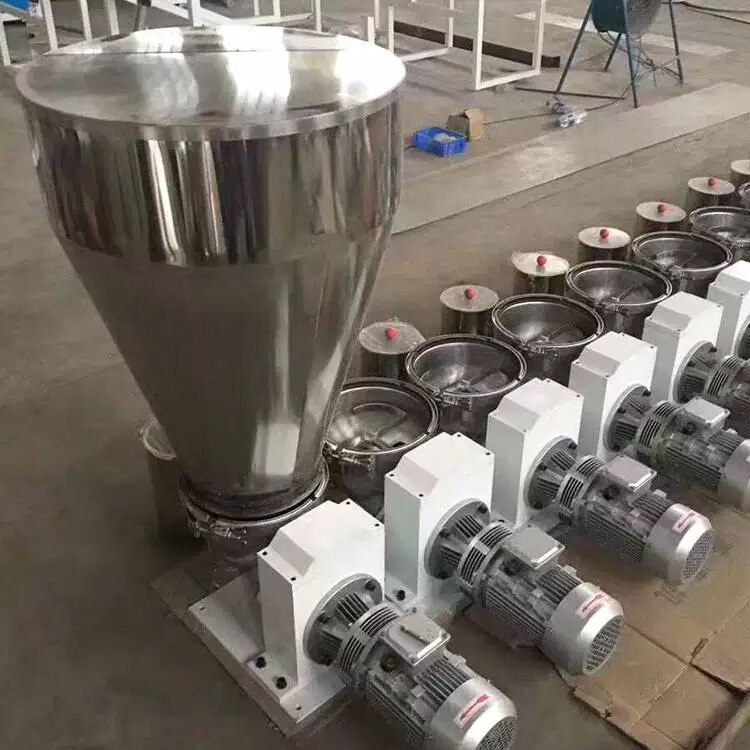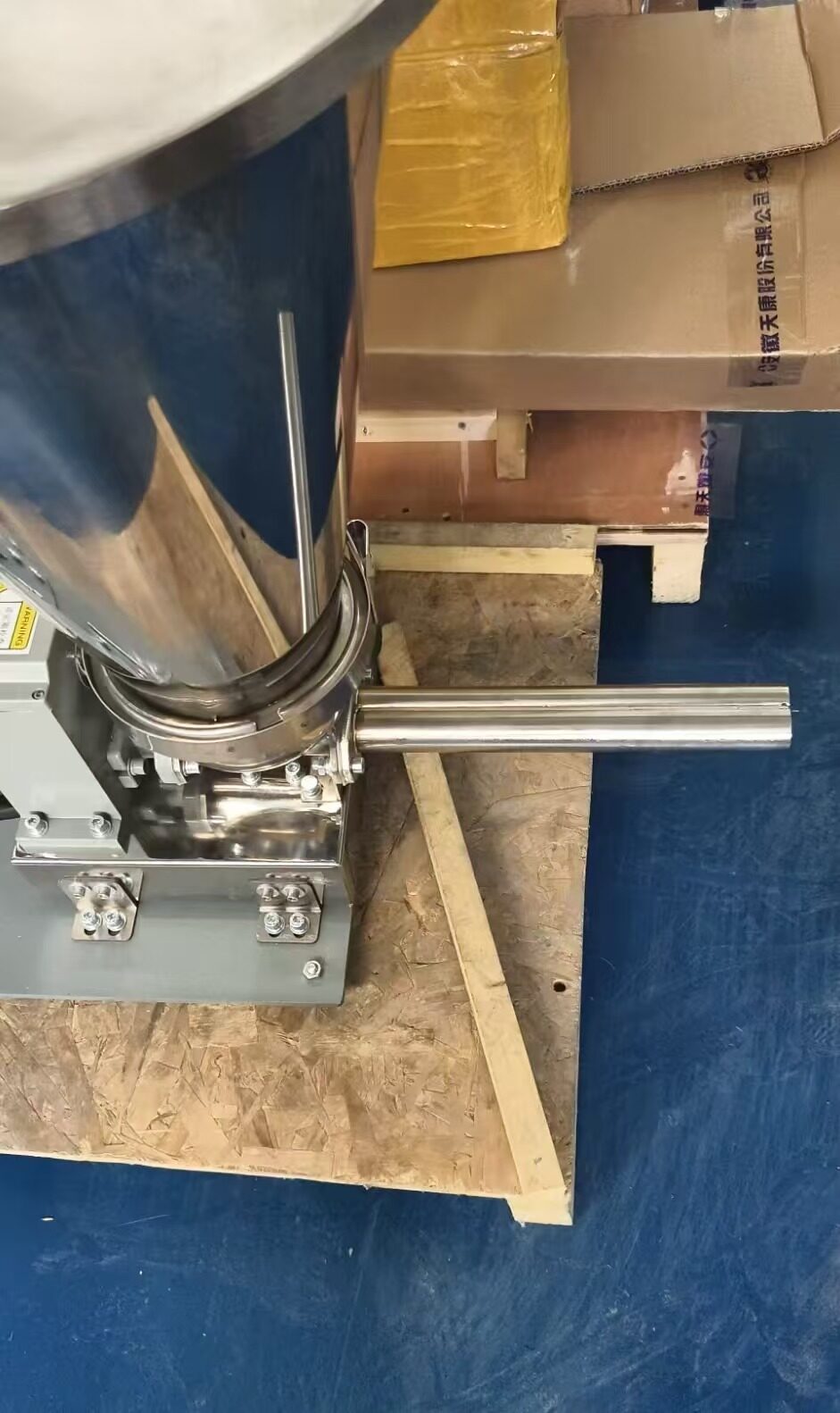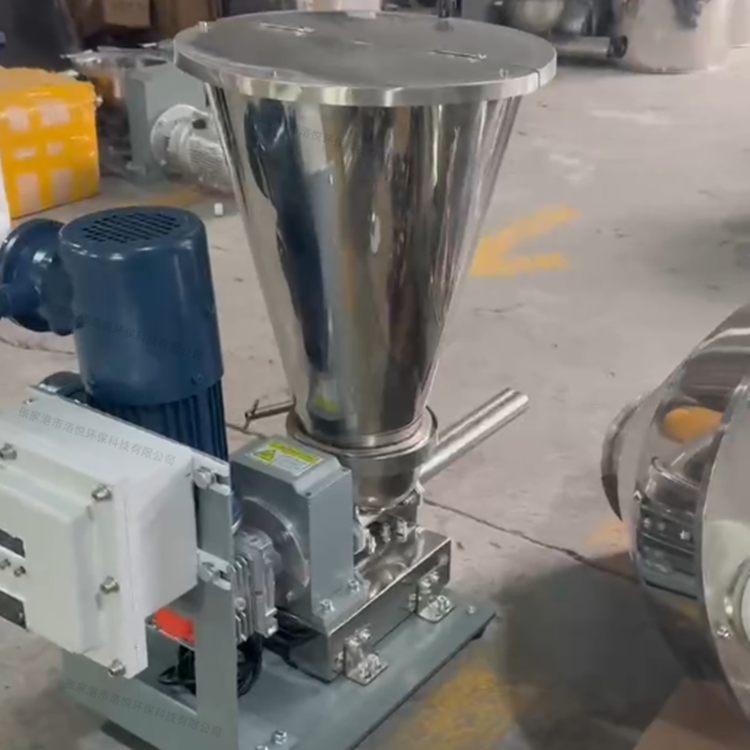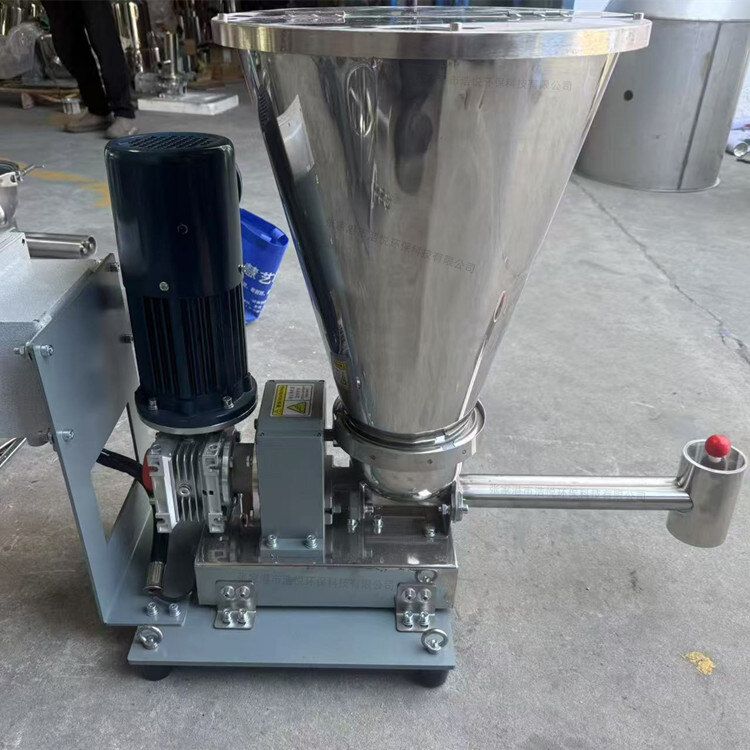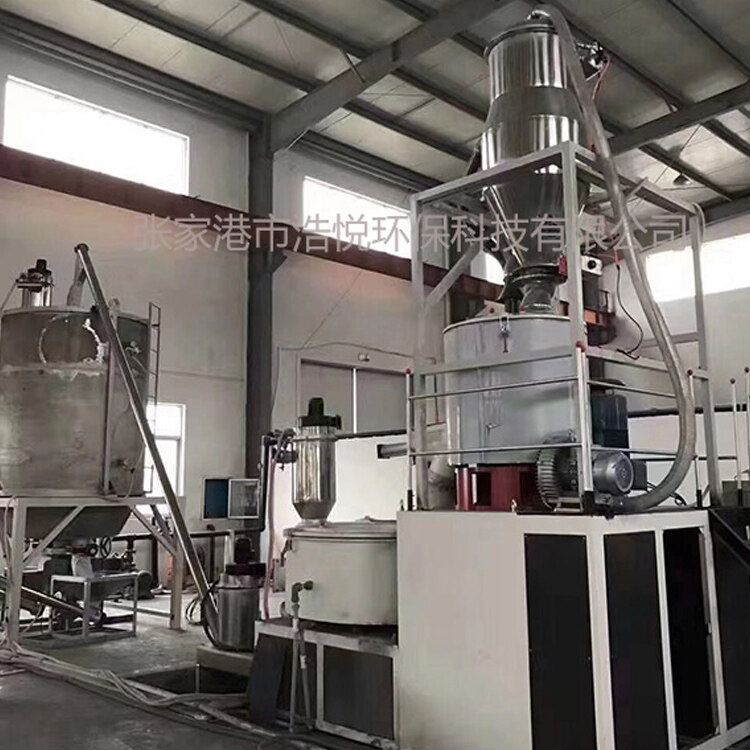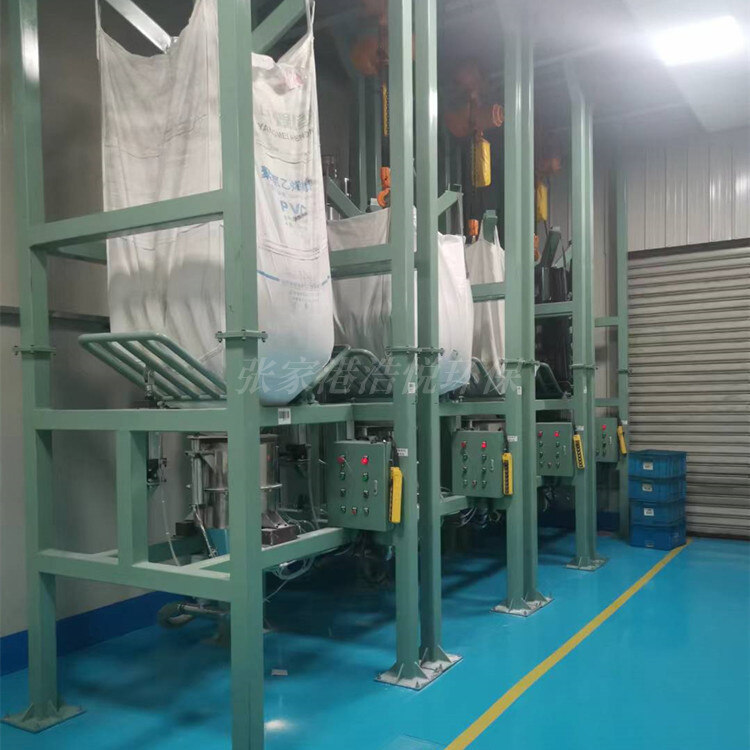- Introduction to automatic batching machine and fully automatic batching machine equipment
- The powder metering system tells you about the introduction of the mixing and drying machine
- 1000kg vacuum feeding machine
- Fully automatic small material batching system
- Research on Innovation of Automatic Weighing Machine Technology
- Design and operation of automatic batching system using PLC, industrial computer and frequency converter
Weighing feeder
- Category:Weightlessness scale
- Hits:132次
- Release Date:2025-06-30
- Share:
- Inquiry
- Details
In the current pursuit of high precision and efficiency in industrial production, weighing feeders have become important equipment for many manufacturing enterprises to optimize their production processes due to their precise measurement capabilities and stable feeding performance. It deeply integrates the weighing and feeding functions of materials, and can accurately control the material flow according to preset formulas. It is widely used in industries such as chemical, food, building materials, and pharmaceuticals. The following will provide a comprehensive and in-depth introduction to the weighing feeder from the aspects of equipment structure, working principle, core advantages, application scenarios, and development trends.
1、 Equipment core composition architecture
The weighing feeder is mainly composed of five core modules: weighing system, feeding mechanism, driving device, control system, and frame. Each part works together to achieve accurate measurement and stable conveying of materials.
(1) Weighing system
The weighing system is the core component of the weighing feeder, responsible for real-time monitoring of material weight. It mainly consists of weighing sensors, weighing platforms, and signal processing units. High precision weighing sensors (with an accuracy of ± 0.1% - ± 0.5%) are the key to weighing systems, usually using strain gauges or electromagnetic force balance sensors, which can sensitively capture changes in material weight and convert weight signals into electrical signals. The weighing platform is used to carry materials and feeding mechanisms, and its design must ensure structural strength and stability to prevent external interference from affecting weighing accuracy. The signal processing unit amplifies, filters, and performs analog-to-digital conversion on the output signal of the weighing sensor, converts the analog signal into a digital signal, and transmits it to the control system.
(2) Feeding mechanism
The feeding mechanism determines the conveying method and flow control accuracy of the material. Based on the characteristics of the material (powder, particle, block, etc.) and production requirements, there are several common feeding mechanisms:
Spiral feeder: suitable for powdered and small granular materials, it pushes the material forward through the rotation of spiral blades. By adjusting the speed of the spiral shaft, precise control of material flow can be achieved, commonly used for feeding materials such as cement, flour, and additives.
Belt feeder: mainly used for conveying materials with larger particles or poor flowability, such as ores, grains, etc. The belt runs at a constant speed under the drive of the driving roller, and the material is conveyed on the belt. The feeding amount is controlled by adjusting the belt speed or changing the thickness of the material layer.
Vibration feeder: Utilizing the vibration generated by the vibration motor, the material undergoes a jumping motion on the hopper to achieve uniform feeding. Suitable for materials that are sensitive to damage, such as nuts, candies, etc., by adjusting the vibration frequency and amplitude to control the material flow rate.
Disc feeder: The material is stored on a disc and fed by scraping it off the disc with a scraper. Commonly used for materials with high viscosity or requiring stable flow, such as molding sand, refractory materials, etc.
(3) Drive device
The driving device provides power for the feeding mechanism, and common driving methods include electric motor drive and hydraulic drive. The motor drive achieves precise adjustment of the feeding mechanism speed through equipment such as reduction motors and frequency converters, and has the characteristics of flexible control and easy maintenance. It is the most commonly used driving method; Hydraulic drive is suitable for situations that require a large driving force, such as feeding heavy materials. It has the advantages of high output torque and smooth operation, but the system is relatively complex and maintenance costs are high.
(4) Control system
The control system is based on PLC (Programmable Logic Controller) or industrial computer as the core, combined with touch screen human-machine interaction interface (HMI). The operator inputs the target weight, feeding speed, formula parameters, etc. of the material through the HMI. During the operation of the system, real-time weight data feedback from the weighing system is collected and compared with the set value. When there is a deviation between the actual weight and the set value, the control system automatically adjusts the operating parameters of the driving device, changes the feeding speed of the feeding mechanism, achieves closed-loop control, and ensures that the material is transported at an accurate flow rate. In addition, the control system also has fault diagnosis, alarm prompts, data recording, and remote monitoring functions, which facilitate production management and equipment maintenance.
(5) Rack
A rack is a frame structure that supports the entire equipment, generally made of high-strength steel welded or bolted together, with sufficient strength and rigidity to withstand material weight and vibration generated during equipment operation. The design of the rack needs to consider equipment installation space, maintenance convenience, and integration with upstream and downstream equipment to ensure stable operation and ease of operation of the weighing feeder.
2、 Working principle and process
The operation of the weighing feeder is based on the principles of dynamic weighing and closed-loop control. After the equipment is started, the material first enters the material bin on the weighing platform. The weighing sensor monitors the weight of the material in the bin in real time and transmits the data to the control system. The control system calculates the current required material flow rate based on the preset formula and feeding speed.
Next, the driving device drives the feeding mechanism to start working, conveying the material to downstream equipment. During the feeding process, the weighing system continuously monitors changes in material weight and feeds back the actual weight data to the control system. The control system compares the actual weight with the set weight. If the actual weight is lower than the set value, it indicates that the feeding speed is too slow. The control system will increase the output power of the driving device, increase the speed of the feeding mechanism, and speed up the feeding speed; On the contrary, if the actual weight is higher than the set value, the feeding speed will be reduced. Through this real-time feedback and automatic adjustment, precise measurement and stable feeding of materials can be achieved.
When the preset feeding amount is reached or a stop command is received, the control system closes the driving device, the feeding mechanism stops working, and completes one feeding process. The entire process can be set to continuous feeding or batch feeding mode according to production needs, meeting the requirements of different production scenarios.
3、 Core technological advantages
(1) High precision measurement
By using advanced weighing sensors and precise control algorithms, the weighing feeder can achieve high-precision material measurement, and the measurement error can be controlled within a very small range. In scenarios where high precision is required, such as catalyst addition in the chemical industry and raw material proportioning in the food industry, the stability of product quality can be effectively guaranteed.
(2) Stable and reliable feeding performance
Through a closed-loop control system and an adapted feeding mechanism, the weighing feeder can maintain a stable feeding flow rate during long-term operation, unaffected by material characteristic fluctuations and external environmental interference. Even in the face of changes in material humidity, viscosity differences, etc., it can ensure the accuracy and continuity of feeding.
(3) Flexible production adaptability
Supports multiple materials and production processes, and can quickly switch feeding mechanisms and adjust control parameters according to the characteristics and production needs of different materials. At the same time, it can store multiple production formulas, and operators can call them with one click through HMI to meet the flexible production needs of multiple varieties and small batches.
(4) Intelligent management and convenient operation
High degree of automation, operators only need to input relevant parameters on the human-machine interface, and the equipment can automatically complete the weighing and feeding tasks. The intelligent control system can also monitor the real-time operation status of equipment, automatically diagnose faults and issue alarms, reduce manual intervention, lower labor intensity, and improve production management efficiency.
4、 Application scenarios
(1) Chemical industry
In the production of chemical products such as coatings, inks, and plastics, it is used for precise measurement and feeding of raw materials such as resins, pigments, and additives, ensuring the accuracy of product formulas and improving product performance and quality stability. For example, in the process of plastic granulation, the amount of color masterbatch added is precisely controlled by a weighing feeder to ensure the consistency of the color of plastic products.
(2) Food industry
In the process of food processing, precise proportioning and feeding of raw materials such as flour, sugar, salt, and milk powder are carried out to ensure the stability of food taste and quality, while meeting food safety and hygiene requirements. On the biscuit production line, the weighing feeder accurately delivers various raw materials to the mixing equipment according to the formula, ensuring that the quality of each batch of biscuits is the same.
(3) Building materials industry
In the production of building materials such as cement, concrete, and dry mortar, it is used for measuring and feeding materials such as cement, sand and gravel, additives, etc., optimizing production processes, and improving the strength and durability of building materials products. For example, in a concrete mixing plant, the weighing feeder accurately controls the ratio of various aggregates and cement to ensure that the concrete grade meets the requirements.
(4) Pharmaceutical industry
In the process of drug production, the precision of weighing and hygiene requirements are extremely high. The weighing feeder is used for precise measurement and dust-free feeding of active ingredients, excipients, and other materials in drugs, ensuring accurate drug composition, preventing cross contamination, and meeting GMP (Good Manufacturing Practice) requirements.
(5) Other industries
In industries such as metallurgy, feed, and new energy, weighing feeders also play an important role. Such as in the metallurgical industry for the ratio of ore and additives, in the feed industry for the mixing and feeding of various feed materials, and in the new energy industry for the precise measurement of positive and negative electrode materials for lithium batteries.
5、 Development Trends
In the future, weighing feeders will develop towards intelligence, integration, and green direction. In terms of intelligence, artificial intelligence and machine learning algorithms are introduced to enable devices to have self-learning and adaptive capabilities, and to automatically optimize feeding parameters based on material characteristics and production data; In terms of integration, it deeply integrates with the enterprise's ERP (Enterprise Resource Planning) and MES (Manufacturing Execution System) to achieve collaborative management of production planning, material inventory, and feeding operations; Greening is reflected in reducing equipment energy consumption, reducing dust emissions, and adopting environmentally friendly materials. By optimizing system design and operating modes, it promotes sustainable development in the industry. Meanwhile, with the development of industrial Internet of Things technology, weighing feeders will achieve more remote and real-time monitoring and management, further enhancing the production efficiency and competitiveness of enterprises.


